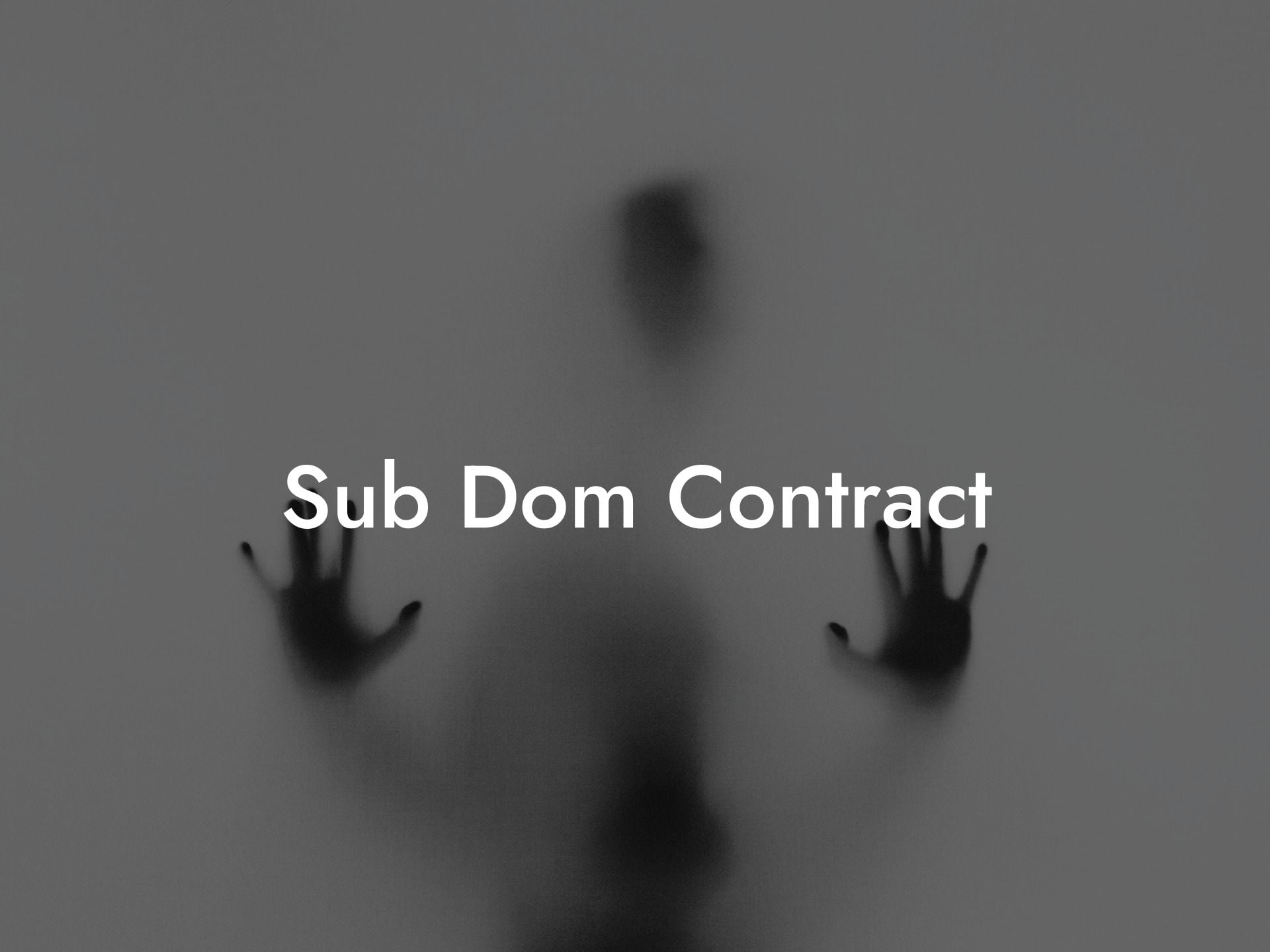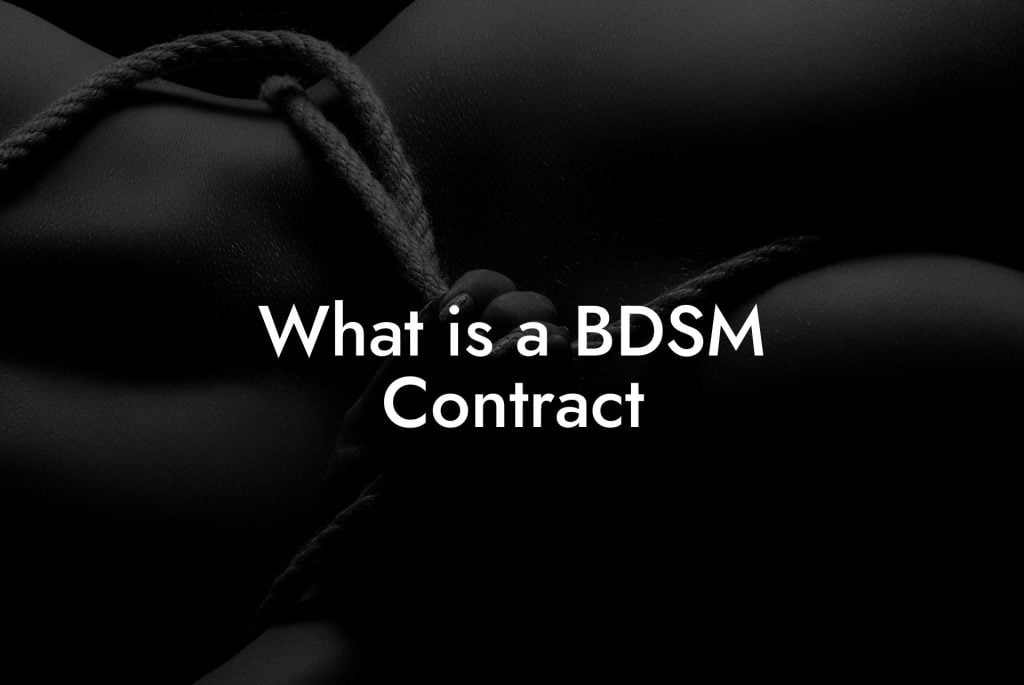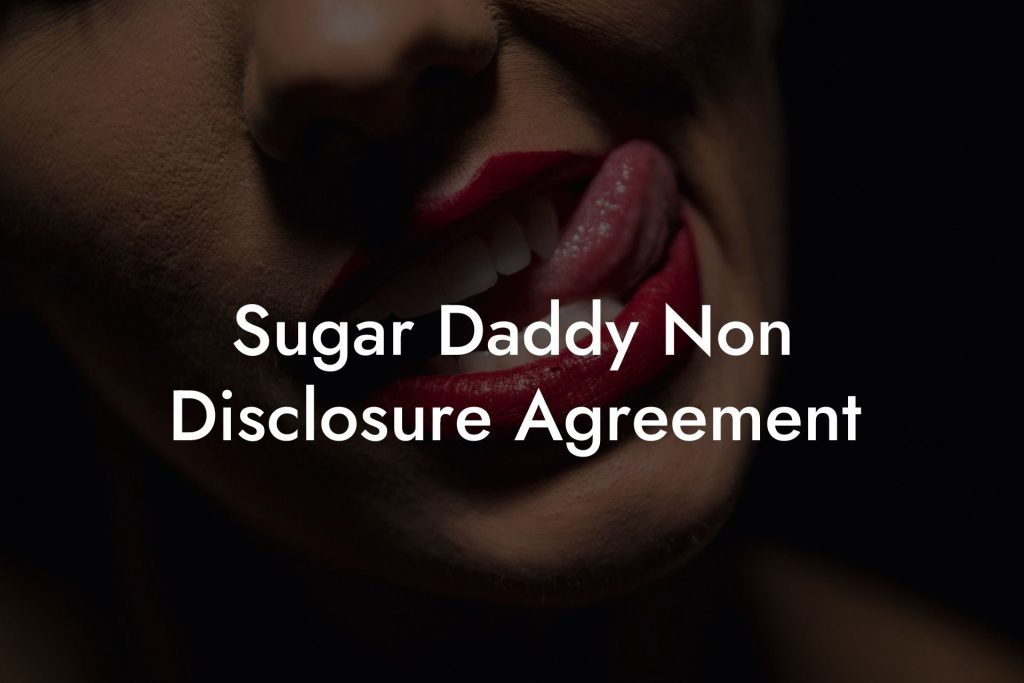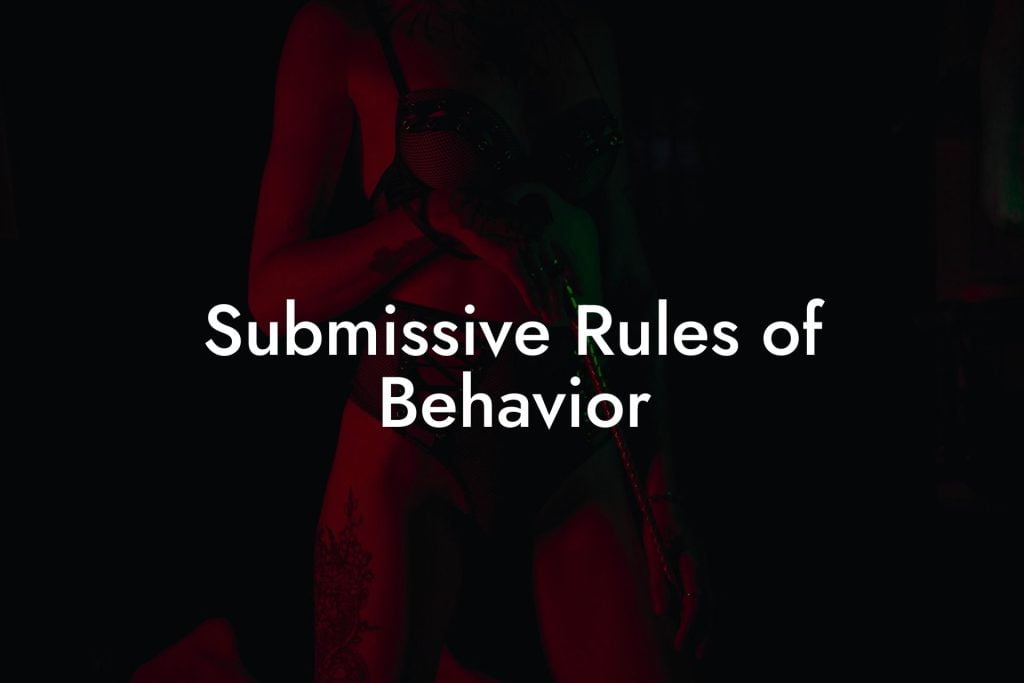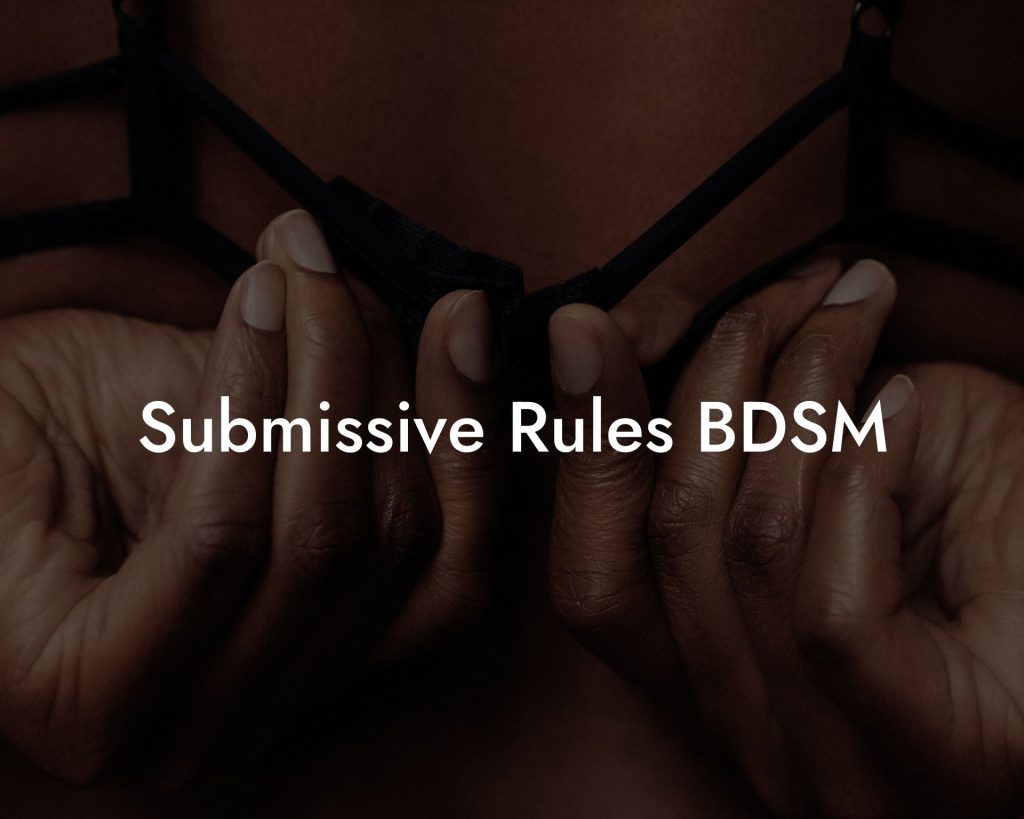Welcome to Filthy Adult, your go-to source for everything related to BDSM and the kink world. In this article, we will delve into the fascinating world of Sub Dom contracts – a key aspect of establishing power dynamics and consent in BDSM relationships. Whether you are a submissive or a dominant, understanding the significance and contents of a Sub Dom contract can greatly enhance your BDSM experiences. So let's dive in and explore the ins and outs of this essential aspect of kink play.
In any BDSM relationship, consent is the cornerstone of trust and respect. It’s more than just saying “yes” or “no”—it’s about openly communicating your desires, limits, and expectations. But trust doesn’t end with a conversation—it’s built through ongoing, clear agreements. That’s where our Dominant & Submissive BDSM Contract Pack comes in. Find out more →
Sub Dom Contract Explained
A Sub Dom contract, also known as a submissive-dominant contract or power exchange agreement, is a written agreement between a submissive and a dominant partner in BDSM relationships. It serves as a blueprint for the power dynamics, expectations, boundaries, and limits within the relationship. The contract outlines the roles, responsibilities, and rules that both parties agree to follow. It acts as a guiding document that helps establish trust, communication, and consent in BDSM dynamics.
Key Components of a Sub Dom Contract
Identification
The contract typically includes the legal names or agreed-upon pseudonyms of both the submissive and dominant partners. These names are used throughout the document for clarity and consent verification.
Roles and Responsibilities
The contract clearly defines the roles of the submissive and dominant partners. It outlines the specific duties, tasks, and expectations that each partner has within the relationship. This section helps establish a structure and framework for the power dynamics.
Consent and Limits
Consent is a cornerstone of BDSM, and the Sub Dom contract highlights the importance of explicit consent and negotiation. The contract includes discussions on hard and soft limits, specifying activities and scenarios that are off-limits or require careful negotiation beforehand. This section ensures that both partners are aware of each other's boundaries and respects them throughout their play.
Looking for the best BDSM & Kink OnlyFans content creators? Here is a list of of our favourites that you will love:
-
- Best BDSM & Fetish OnlyFans - Molly✨ >> Link
- Best BBW & Huge Ass OnlyFans - Naughty Hanna Zimmer 💜🎀 >> Link
- Best Sexy Gaming Nerd OnlyFans - 🎮 Gracy EstuSWEET 🎮 >> Link
- Best Fetish & Kink Messaging OnlyFans - 💫Lola La Fleur 💫 >> Link
- Best Girl Next Door OnlyFans - ☀️Lily ⛅ >> Link
- Best Tiny European OnlyFans - 💝 Ami Allison 💝 >> Link
- Best Cosplay OnlyFans - 🐱 Little Kitty Kate 👉👌 >> Link
- Best Little OnlyFans - 🧸 Katya 🙇♀️ Sun >> Link
- Best Sub OnlyFans - 🍌Hanna Banana🍌 >> Link
- Best Teen & Huge Tits OnlyFans - ❣️Anny❣️19 y.o. BUSTY student girl >> Link
- Best Tiny Tits OnlyFans - ⍣⭐️ Sofia Parker ⭐️⍣ >> Link
- Best Sub & Huge Boobs OnlyFans - Nika Huge Boobs >> Link
- Best Kink OnlyFans - Sofia💖 >> Link
- Best Fetish & Girl Next Door OnlyFans - Hillary is Wet 💦 >> Link
- Best Dirty Latina OnlyFans - Paula Flores 😈 >> Link
Not quite what you are looking for? View the full list →
Safewords and Communication
The contract establishes the use of safewords or other communication signals to indicate when a scene needs to stop or be adjusted. It emphasizes the importance of continuous communication, checking in with each other, and creating a safe and consensual environment.
Duration and Termination Clause
The contract defines the duration of the agreement, whether it is for a specific period or an ongoing arrangement. Additionally, it includes a termination clause that allows either partner to end the contract if the relationship dynamics change or if it no longer aligns with their needs and desires.
Frequently Asked Questions
What is a BDSM contract?
A BDSM contract is a written agreement between individuals participating in BDSM activities. It outlines the roles, expectations, boundaries, and consent that have been agreed upon by the parties involved. While not legally binding, it serves as a physical documentation of a mutually understood agreement to ensure clarity and trust.
Are BDSM contracts legally enforceable?
No, BDSM contracts are not legally enforceable. They are symbolic documents that outline the terms of the relationship or scene. However, they help foster communication and articulate expectations, which are critical to safety and consent.
What are BDSM power dynamics?
BDSM power dynamics refer to the power exchange between individuals within a BDSM relationship or scene. Common dynamics include Dominant/submissive, Master/slave, and Top/bottom roles. They are an integral aspect of BDSM and are based on consensual power differences.
How important is consent in BDSM?
Consent is paramount in BDSM. All parties involved must clearly communicate and agree to the activities before they take place. Consent must be informed, voluntary, and revocable at any time, ensuring that the integrity of the relationship or scene is maintained and respected.
What are safe words, and how do they work?
Safe words are predetermined words or signals used during BDSM activities to communicate boundaries. They provide a clear and immediate way to pause or stop the scene if needed. Safe words allow for safe exploration of boundaries and maintain the trust and consent that is integral to BDSM.
Should I negotiate a BDSM contract with my partner?
Negotiating a BDSM contract with your partner is an excellent practice as it encourages communication and establishes clear expectations and boundaries. It's a key part of setting up a consensual and healthy BDSM dynamic.
Can a BDSM contract include anything?
While a BDSM contract can be very flexible, it should include anything that is relevant and important to the consenting parties. Common elements are limits, safe words, rules, duties, duration of the contract, and confidentiality clauses, among others. However, the contract should not include anything that compromises consent or personal limits.
How do I discuss a BDSM contract with my partner?
Discussing a BDSM contract with your partner should be done openly and honestly. Approach the conversation with a clear idea of your needs and boundaries, and encourage your partner to express theirs. Listening, empathy, and a non-judgmental attitude are key in these discussions.
Is trust essential in BDSM?
Trust is one of the pillars of BDSM relationships or scenes. A high level of trust between parties ensures that individuals can express their needs, limits, and desires, knowing that they will be respected and upheld.
What is the difference between a scene and a relationship in BDSM?
A BDSM scene refers to a specific period where the individuals involved partake in BDSM activities, usually with a defined start and end. A BDSM relationship, however, implies a more ongoing connection that typically includes power dynamics and may or may not include scenes.
How can I ensure safety in a BDSM scene?
To ensure safety in a BDSM scene, communicate openly about limits and use safe words. Adequate preparation, knowledge of the activities being engaged in, and a mutual understanding of potential risks are crucial. Aftercare is also important to attend to any emotional or physical needs following a scene.
What if my interests in BDSM change over time?
It's natural for interests to evolve. Open communication with your partner(s) about changing interests is important. A BDSM contract can be renegotiated or updated to reflect these changes, ensuring everyone is still consenting and comfortable.
How does a new person get started with BDSM?
Newcomers to BDSM should start by researching and educating themselves on the practices. It's vital to understand the principles of consent, communication, and safety. Engaging with the BDSM community, through forums or local groups, to gain knowledge and connect with potential mentors is also helpful.
What is aftercare, and why is it important in BDSM?
Aftercare is the attention given to participants after a BDSM scene to help them transition back to reality. It might involve physical care, such as providing blankets or hydrating, or emotional care, like cuddling or debriefing the scene. Aftercare is essential for restoring emotional and physical well-being.
Is it okay to have hard limits?
Yes, it is absolutely okay to have hard limits, which are activities you do not consent to under any circumstances. Having and respecting hard limits is critical to maintaining safety and trust in BDSM relationships.
How should I handle a violation of a BDSM contract?
If a BDSM contract is violated, it's vital to stop any ongoing activities and address the breach. Communication is key to understanding what happened and why. Depending on the nature of the violation, rebuilding trust, re-negotiating the contract, or even ending the relationship might be necessary responses.
Can beginners have a BDSM contract?
Beginners can and are encouraged to have a BDSM contract as it guides them through setting boundaries and expectations. A contract helps in navigating new experiences with a sense of security and clear guidelines.
Should I have a safe word even if I fully trust my partner?
Yes, having a safe word is a best practice in BDSM, regardless of trust levels. Safe words provide a straightforward way to communicate during a scene and can be critical in ensuring the safety and comfort of all participants.
How can I bring up the topic of a BDSM contract with a potential partner?
To bring up the topic of a BDSM contract with a potential partner, approach the conversation with openness. Share your reasons for wanting a contract, and ask about their feelings toward setting one up. Ensure the discussion is pressure-free and collaborative.
What should be considered when drafting a BDSM contract?
When drafting a BDSM contract, consider reflection of both parties' desires, limits, and expectations. Include details about confidentiality, duration, safe words, and any specific rules or protocols that are to be followed. Consideration of legalities, like consent and the non-binding nature of the agreement, should also be included.
How do variations in local laws affect BDSM practices?
Local laws can significantly affect BDSM practices since some activities might be considered illegal, regardless of consent. It is crucial to understand and comply with the laws of your jurisdiction when practicing BDSM to ensure that all parties are protected legally.
[Example Contract]
Congratulations! You've now gained a comprehensive understanding of Sub Dom contracts and their significance within BDSM relationships. Incorporating a Sub Dom contract can provide a solid foundation for exploring power dynamics with clear boundaries and consent. Remember, communication and continuous consent are crucial in any BDSM relationship. Don't forget to check out our Ultimate BDSM Contract Pack, explore our fetish shop, and read other informative guides on Filthy Adult to enhance your knowledge and satisfaction in the exciting world of BDSM. Share this article with fellow kink enthusiasts and continue to explore the endless possibilities that BDSM has to offer.

